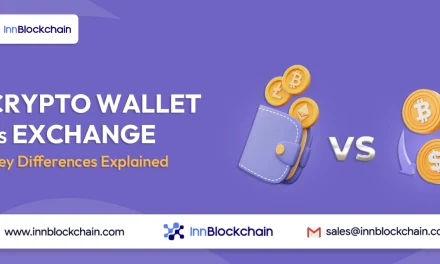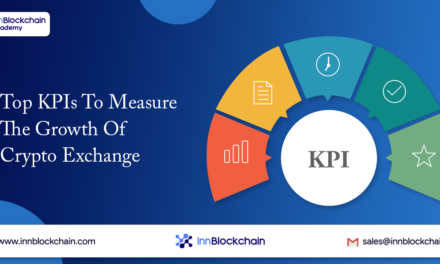Bonjour Cryptopreneurs! Before starting the blog Cryptocurrency Exchange Business Model, let me energize you all with a short parable about a Chinese bamboo seed. So that you would be able to better understand the significance of this blog at the end.
Let’s begin!
This might sound a little weird, but hear me out on this one. Like any other plant, the Chinese bamboo tree begins its journey. Surprisingly even though the seed is planted and watered, nothing will happen till the end of the fourth year.
Finally, from the fifth year, a tiny sprout will start to appear on the ground. And it miraculously grows up to a height of 90 feet in just six weeks! Amazingly, we can see the plant grow!
Now the question is what was the bamboo seed doing during those five years? It was growing roots!! During those dormant periods, it is constructing the proper root system for its massive growth in the future. Quite interesting, huh?
In some ways, finding success in your cryptocurrency exchange business should resemble the aforementioned parable story of the Chinese bamboo tree. For that, we’re not saying to create a business plan for five years. With proper strategy, one can steer their cryptocurrency exchange business in a structured way.
But how?
That’s where the business model comes into the picture! This aids in the development of a sound plan for achieving your business objectives. Before delving deeper into the topic, let’s take a look at What cryptocurrency exchange business model and why a cryptocurrency exchange needs a business model.
Overview of the Cryptocurrency Exchange Business Model
Cryptocurrency exchange business model is a set of approaches & decisions used to monetize your business, provide value to your customers, and help to enhance your product or services accordingly. Generally, business models differ from the business plan and it can be edited according to your long-term revenue goal.
Nowadays Tons of billions of crypto-based businesses running globally. If you have a crypto business idea and you wanna stand ahead of your competitors and succeed in the race, better go with a cryptocurrency exchange business model. Where you will get a unique value proposition, myriad revenue streams, and loads of creativity.
Cryptocurrency exchange business model is the core for all successful startups because no matter how the idea is or how unique something looks, a startup must have a separate strategy to make money that is worthy enough for future investment and to sustain itself in the market.
Crypto market has numerous crypto-based business models to generate revenue. But as a founder, it’s your responsibility to sketch out the right one that best fits your business. If you don’t have an idea, here let me share 9 standards of business models which have proven successful for many startups & business ventures globally.
Why does the Crypto Exchange Business model for entrepreneurs?
Since the 1990s, the quote “If you build it, they will come” has been the business mantra of every startup company, which has become an outdated mantra in today’s competitive market.
Then, in 2005, the Business Model Canvas was created, giving us the ability to think outside the box and help optimize our business in every nook and corner of the marketplace.
Imagine! Instead of writing a document about your cryptocurrency exchange business of 3000 – 5000 words long to help your audience! Creating a business model will help to communicate your business value to your team, customers, investors, and partners easily.
Simply put, the business model aids you to get a clear picture of where your business platform is today, where it will be in the future, and how it will get over there. Moreover, your business idea moves from the theory stage to the planning stage to have a better execution stage with its help.
For Instance:
- Who are you partnered with?
- How to approach your customers?
- How much does it cost to develop an exchange platform?
- Which of your revenue streams is the most suitable?
Of all, a business model assists to look more closely at the value propositions of your business and find more effective ways to position your service with customers. Although the future of your cryptocurrency exchange business is obscured in the details. Once you do a business model, you’ll be equipped to put it into practice.
Now let’s take a look at the 9 standards of crypto exchange business model.
Cryptocurrency Exchange Business Model: 9 Standards
The crypto exchange business model aids you in effortlessly defining and articulating your bitcoin exchange business idea quickly to your business audience. This one-page guide walks customers through the core components of a business while cogently outlining your vision.
It comprises 9 standards to reveal the key attributes of your company’s story. It ranges from your business’ motto to who are your customers to how exchanges make money to what you have.
These 9 standards are categorized under 4 subsets in the business model. They are
- Offerings
- Customers
- Infrastructure
- Finances
Let’s go through these subsets one by one, with a well-known cryptocurrency platform, Binance as an example in the following discussions.
Offering – Value You Offer!
This core section examines the value your crypto exchange provides to your customers. Value can be defined as who your business targets and serves in the marketplace.
Let’s be more specific…
Cryptocurrency Exchange Value Propositions
The value proposition is the cornerstone of your trading platform business. Simply put, it is the fundamental idea of the value exchange between a crypto trading platform and its users or crypto innovators.
When you provide the crypto trading service for buyers and sellers through your platform, you interchange the value of your business in exchange for a commission or fee.
Example: Binance’s value proposition includes traders and crypto innovators.
- Traders: Provides access to a secured crypto exchange platform with high liquidity and low transaction costs.
- Crypto Innovators: Binance Labs (technology incubator), and LaunchPad for fostering pre-ICO projects for crypto innovators, API interfaces, and more.
Generally, the value proposition is typically the most crucial part of any business. In the crypto exchange business, it answers the question of
- Why are you valuable?
- Why do people need it?
- Why should traders use your platform to trade cryptos?
If you have the answers to all of these queries, you can use them as a solid foundation and clearly define the target audience for your service.
Moreover, it is important to understand the context in which your service fits into the value chain and the intention the crypto trading business is trying to achieve for customer segments in the business model.
Now, let’s look at the second subset, Customers, which covers all aspects of your business’s end users.
Related Article: How To Start A Cryptocurrency Exchange Business?
Customers – All About End Users!
This part is all about your customers: How you converse with them, where and how they use your platform. It consists of three sub-groups namely customer segment, channel, and customer relationship.
Let’s look at them one by one…
Cryptocurrency Exchange Customer Segments
Customer segmentation is the practice of dividing the customer base into groups of individuals who are similar in specific ways, such as traders (novice & experienced), crypto token launchers, financial institutions, payment solution providers, and integration providers.
Example: Binance’s customer segments consist of traders and crypto innovators.
- Traders: Users who want to easily buy and sell cryptos on a secured exchange.
- Crypto Innovators: Individuals who require a reputable marketplace to introduce their crypto-based ideas.
Questions to ask yourself when determining customer segments:
- To whom are services provided?
- Who will value my value proposition, exactly?
- Do they use another exchange platform?
- If so, what qualities do those platforms have?
- Do people find my value proposition appealing?
- Which age group does my platform appeal to?
- What attributes do traders have that appeal to my value proposition?
So, the best way to reach your target audience is to look at customer segments and find out where your service solves the difficulties that traders and speculators face. Other factors to assess and comprehend are the size of your market and the size of your customer segment.
This will help you understand your crypto market better!
Cryptocurrency Exchange Channels
The channel of your cryptocurrency exchange is the medium or path through which your customer interacts with your exchange platform via social media, emails, phones, blogs, community forums, websites, and mobile apps to become part of your sales process.
Example: Binance Exchange has a social media page on Twitter, Facebook, Instagram, and Reddit. Also, Forum community and website as well as Mobile Apps for both iOS and Android users.
Questions to ask yourself when determining channels:
- How am I going to communicate my value proposition to my customer segment?
- Where are my customers?
- How can I find them?
- What social media are they most active on?
- What are other marketing strategies to reach my target customers?
- Which region has the highest usage of cryptocurrencies?
These are the questions you should ask yourself when identifying channels to reach your targeted customers. As a result, the channel acts as a communication bridge connecting a large audience to your cryptocurrency exchange platform.
Crypto Exchange Customer Relationships
Customer Relationships are defined as how your crypto trading business interacts with its customers. It simply clarifies the points of contact between you and your customers as well as the communication techniques employed.
This customer relationships segment also includes an exchange of digital assets, retrieval of real-time price information, notification, accepting or requesting payments by users, insurance coverage, support via social media, community forums, and customer service.
Example: Binance maintains its customer relationship and provides support through various channels such as social media, webinars, email, community, and academy.
Questions to ask yourself when determining customer relationships:
- How do I acquire customers?
- How not to lose them to rivals?
- How can I retain them?
- What actions will make the platform grow?
These are the questions about customer relationships that you have to look for answers to. Additionally, this will assist you in the beginning to outline the activities of your business and in locating potential for innovative ideas.
Next to the customer subset, let’s look at infrastructure which includes the things you need to focus on in a crypto exchange business.
Infrastructure – Things You Need To Focus on!
This infrastructure section covers everything you need to run your cryptocurrency exchange business, including the partners, staff, processes, and technology. This section includes key resources, key activities, and key partners of your business.
Key Resources: Which to Emphasize?
Key resources list all the important things you need to deliver the business value you do to your targeted customers. It includes physical, financial, intellectual, or human resources that may be owned or leased by the organization or obtained from key partners.
The following key resources are required to carry out your cryptocurrency exchange business activities:
The exchange platform (web or app), blockchain/database, trading functionality, API, wallet, investments, payment gateways, staff, licenses, intellectual property, hardware, business location, marketing, and customers (crypto-traders) are the list of key resources of your exchange platform.
You need each of those things to run a successful business. Besides, you don’t have to build the entire product at a stretch when you start. All you need is a simple minimum viable product to get things started.
Questions to ask yourself when determining key resources:
- What resources are needed for the Value Proposition?
- What resources are required for Distribution Channels?
- What resources are required to keep up customer relationships?
- What resources do my revenue streams require?
Example: Some key resources of Binance include the exchange platform, Binance chain, research, and LaunchPad. Other resources like Binance labs and academy.
Key Activities: What to Focus on?
The key activities area embodies crypto Exchange Platform development (web or app), user authentication, currency conversion, trade monitoring, payment processing, platform management & maintenance, private equity, problem-solving, trust & security, technical support, customer acquisition, etc.
Questions to ask yourself when determining key activities:
- What Key Activities are necessary for my Value Propositions?
- What actions are essential to my distribution channels?
- What activities are crucial to maintaining customer relationships?
- What types of activities are essential to my revenue stream?
Therefore, these Key activities of your cryptocurrency exchange business model are the actions that your platform takes to achieve value for your customers.
Example: Binance’s key activities include trading, staking, swap farming, and more.
Key Partners: Whom to Collaborate?
The key partner is a place to show with whom you collaborate. They are your business’s most important partner in delivering the value you guarantee to your customers.
Generally, this may include financiers, traders, alliances for payment and integration, a cryptocurrency exchange development company, affiliates, insurance, and anyone who supports your business. They are your business’s most important partner in delivering the value you guarantee to your customers.
Example: Binance has various affiliate programs, Binance pay as a payment option, and API integration to connect to its server and its platform users as key partners.
Questions to ask yourself when determining key partners:
- Who are my Key Partners?
- What key resources do I get from partners?
- Which Key Activities do partners perform for me?
When readers skim your cryptocurrency business model, they will come to know that you are not a lone wolf in launching a cryptocurrency exchange by yourself. Also, they will come to know that they are not the only ones signing up to support the growth of your company.
The last section of your crypto exchange business model to explore is Finance, which embodies all the expenses and revenues of your business.
Finances – Know Your Expense & Revenue!
The finance section explains how much it costs to build your cryptocurrency exchange business and how you can profit from it. This subsection consists of two categories: Cost structure and Revenue stream
Cryptocurrency Exchange Cost Structure
The cost structure is referred to as the monetary cost of operating a cryptocurrency exchange business. However, it would be largely associated with the development and maintenance of the platform, IT infrastructure, intellectual property, secure data centers, service rental, salaries, operation and development, and insurance.
Example: Binance’s cost structure consists of salaries, IT infrastructure & operations, platform maintenance, marketing, and intellectual property.
Questions to ask yourself when determining cost structure:
- How much will it cost to achieve my business’s key activities?
- What are the costs associated with my key partner and resources?
- How much does it cost to achieve the value proposition for my users?
- Does operating my crypto exchange incur additional costs?
These are the important questions that should be included when you estimate the cost of cryptocurrency exchange. This cost structure part does a good job of putting expenses into operating expenses and capital expenses, and that can serve as a good model for this part of the canvas.
Cryptocurrency Exchange Revenue Model
Finally, how do crypto exchanges make money? This is the most awaited part that every startup entrepreneur looks for.
Revenue streams refer to how you make income from your value proposition sold to your target market (customer segment). If you have multiple customer segments, make your plans accordingly so that you can profit from each one.
Some of the revenue streams you can implement in your revenue stream segment are conversion fees (crypto-to-fiat or fiat-to-crypto), transaction fees, trading fees, maker-taker fees, volume-based fees, margin fees, token launch, listing fees, withdrawal fees, commissions, staking crypto, annual fees, and third-party ads.
Example: Binance makes money through margin borrowing interest, spreads, futures trading, annual fees, and cross-collateral interest rates. It charges trading fees to users who choose not to fund their trades with BNB. Also, charge withdrawal fees to move cryptocurrencies out of the platform.
Questions to ask yourself when determining revenue stream:
- What price range are your customers willing to pay for your services?
- How do your customers want to be paid?
- How much does each revenue stream contribute to overall profit?
Initially, freemium services you offer, some of your users may eventually sign up as your paying customers. Since you are serving your customers, repeatedly talking to them and getting their feedback is a great way to determine the best model.
Finally, we hope you have gained a little insight into what we have discussed here. So spend some time crafting each section carefully and presenting a complete story of your company in the business model.
Here is an example of crafting a cryptocurrency exchange business model for your business.
Now it’s time to wrap up this blog with the final words…
Final Words
The demand for cryptocurrency exchanges increased day by day due to the increasing number of cryptocurrencies and their users. While crypto users, experts, enthusiasts, and many others may converse about the ups and downs of cryptocurrencies in the market, business people like you should only think about the prospects present in them.
Therefore, make your roots strong enough for a tree to laugh at the storm!! Start sketching your crypto business model today to build a better future for your cryptocurrency exchange business tomorrow!
If you found this blog useful and want to get updates on these topics in the future, click the SUBSCRIBE button on the top right corner and stay connected with us. See you in the next blog!
Frequently Asked Questions
Is the crypto business model helpful for businessmen?
Yes, the Crypto business model sketches out a set of guidelines and decisions to monetize your crypto business. This helps businessmen to easily tap into innovative markets, enabling global transactions without traditional financial constraints. Crypto business model is a gateway for money-making opportunities for growing entrepreneurs.
How to find the best Bitcoin exchange business model?
You can choose the best Bitcoin exchange business model based on the standards which have the potential to change your business ideas into money-making solutions. While choosing, verify whether the business model standards satisfy your value proposition, value delivery, and value capture.
What Is Cryptocurrency Exchange Business Model?
Cryptocurrency Exchange Business model is a framework that illustrates a graphical representation of various components and interactions involved in running a cryptocurrency exchange platform. Moreover, the Business model outlines how the exchange generates revenue, ensures security, provides user-friendly interfaces, and complies with regulations.






